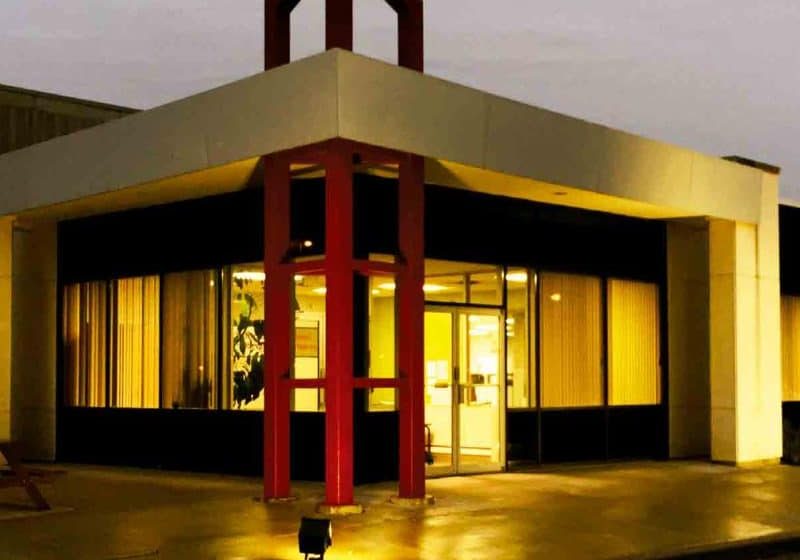Berlin hosts 22nd IAEE congress on elevator technology.
photos by Bülent Yılmaz
The 22nd biennial congress of the International Association of Elevator Engineers (IAEE) took place in Berlin on May 22-24. The congress steering committee was composed of IAEE President and Elevcon 2018 Chairman Ami Lustig (Eng. S. Lustig, Consulting Engineers Ltd., Israel), President Emeritus John Inglis (OAM, Australia), John Antona (Vertical Transport Technology Corp., U.S.), Robert Nicholson (Architectural Elevator Consulting, U.S.), Dr. Albert So (IAEE Hong Kong-China Branch), IAEE Administrative Board Chairman Joseph Stier (Belgium), and Sefa Targit (president of the Turkish Elevator and Escalator Industry Association). The program featured 31 paper presentations and one workshop; the papers were published in Elevator Technology 22: Proceedings of Elevcon 2018.
The congress had 138 registrants from 25 countries representing approximately 90 different companies and organizations from North America, Europe, the Middle East and Asia. The companies and organizations included elevator system manufacturers, component manufacturers, consultants, trade organizations, media, standards associations, research groups and universities. Elevcon exhibiters included Elevator World, Inc.; Elevatori; Lift-Report; ELFIN GmbH; Giovenzana International B.V.; Langer & Laumann Ing.-Büro GmbH; Magnetek; Chr. Mayr GmbH + Co. KG; NeXt group e.V.; Pizzato Elettrica S.r.l.; Schwartz GmbH Technical Plastics; SICOR S.P.A.; and Warner Electric Europe.
The congress opened with three welcoming addresses: one from Lustig and two from representatives of Germany. Gunther Adler, state secretary at the Federal Ministry of the Interior, Building and Community, welcomed congress attendees to Germany and Berlin, and Thomas Pfaff, chairman of the German Committee for Lifts, offered an industry welcome. Lustig’s welcoming remarks included a brief overview of the challenges represented by the industry’s increasing reliance on web-based products and systems. His comments focused on the dangers of computer hacking and the need to balance innovation with appropriate safety measures. The topics identified by Lustig included digital technologies, innovation and safety. Perhaps not surprisingly, these also served as the focus of many of the papers later presented.
Digital topics addressed included predictive maintenance, custom elevator manufacturing, door sensor systems, car/passenger communications systems and traffic analysis. Ana Gómez (Control and Monitoring Area, IK4-Ikerlan, Spain) was the lead author on “A Virtual Sensing Approach for Predictive Maintenance in Elevators.” Her coauthors were Oscar Salgado (IK4-Ikerlan), Ekaitz Estaben (Mechanical and Industrial Production Department, Mondragón University, Spain), and Inge Isasa and Xabier Hernández (Mechanical Engineering Department, Orona EIC S. Coop., Spain). The paper described the use of “virtual sensors” to detect electrical and mechanical faults and the validation of this methodology through a lab-scaled elevator test bench designed to simulate the operational characteristics of a 1:1 traction elevator. Gómez’s paper was selected as the recipient of the Elevatori High Tech Award. Two other papers also addressed this topic: Rami Aro (Weidmüller Schweiz AG, Switzerland) and Carlos Paiz Gatica (Weidmüller Interface GmbH & Co. KG, Germany)’s “Predictive Maintenance — Smart Services Enabled by Industrial Analytics” and Krishna Mohan Mishra, Tomi R. Krogerus and Kalevi J. Huhtala (Tampere University of Technology, Finland)’s “Fault Detection of Elevator Systems Using Automated Feature Extraction and Classification.”
Ali Baygur (Geta Asansör San. Tic. A.Ş.) discussed the manufacture of elevator systems utilizing parametric design software accessed via a web interface. This approach was described as particularly useful in fabricating systems in a timely manner for nonstandard settings. Baygur’s paper, in many ways, described a 21st-century version of a 19th-century process. In the 1800s, many elevator catalogs included a template and list of the basic information required to build an elevator for a given installation (shaft size, floor-to-floor heights, length of run, etc.). Prospective customers would send the requested data via mail, and the manufacturer would provide a quote in return mail. The use of a web interface to submit a client’s data both updates – and improves on – this older process, as well as linking it to modern computerized manufacturing techniques.
Two papers addressed the replacement of traditional elevator door light curtains with digital solutions. Shuhei Noda (Toshiba) was the lead author on “Door Safety Function for Elevators Using Video Analysis,” which was coauthored with Kentaro Yokoi, Hiroshi Sukegawa, Teh Kok Long and Sayumi Kimura (Toshiba). Noda, et al. proposed a door safety system that employs a camera-based photoelectric sensor utilizing video-analysis technology to detect movement and prevent door closure (SMART DOOR™). The system features included a wider detection area and precise movement detection. Christian-Erik Thöny (CEDES) offered a different solution in his paper “Historic Change in Elevator Door Sensors — Light Curtains Are Set to Become History, Replaced by Intelligent TOF Technology.” Time-of-flight (TOF) refers to the length of time between the emission of a signal from a sensor, the signal striking an object and its reflection back to the sensor. Thöny described the “TOFgard” sensor, which extends the sensor field across the entire door front and provides improved entrance monitoring and passenger counting, while preventing unintended car movement.
Fabio Liberali (LU-VE Group) coauthored a paper with Alessandro Cremaschi (TGD s.p.a.) titled “Gateway, the Magic Mirror: IoT Application for Lift Cars.” The authors’ reference to the Internet of Things (IoT) was one of several made during the congress to this important contemporary intellectual concept and digital reality. Liberali and Cremaschi presented a web-linked interactive-mirror display system for use in elevator cars. The mirrored surface acts as a touchscreen that allows a wide range of functions, from providing general information to facilitating real-time emergency support for passengers.
Digital technologies (both hardware and software) have been critical aspects of traffic-analysis strategies throughout the 21st century, and papers on traffic analysis have been a normative component of past Elevcon congresses. However, somewhat surprisingly, only two papers presented in Berlin (compared to a typical average of six to seven papers) addressed this topic. Janna Sorsa (KONE) presented “Fulfilling the Potential of Double-Deck Destination Control System,” and Takahiro Hatori (Building Systems Business Unit, Hitachi, Ltd.) presented “Development of People Flow Simulator for Smooth Movement of People in a Building,” coauthored with Fujiwara Masayasu (R&D Group, Hitachi) and Toriyabe Satoru (Building Systems Business Unit, Hitachi). The latter paper addressed the application of Hitachi’s people-flow simulator to both traditional hall-call and destination-floor reservation systems.
Papers on the development of safety standards and codes have also been a mainstay of past Elevcon congresses, and, in this case, Berlin was no exception. Four papers address this topic. Louis Bialy (Louis Bialy and Associates) presented “Towards Greater Uniformity of Worldwide Elevator Standards,” which addressed increased participation in International Organization for Standardization activities by industry members from the Asia-Pacific Area (APA). Tijmen M.J. Molema (Liftinstituut) presented “Safety in 2028, Predicting the Safety Level of Future Standards.” His paper included a call for more thorough and comprehensive accident data collection. Ada Y.S. Fung (Construction Industry Council of Hong Kong) discussed the development of safety standards in Hong Kong between 2010 and 2016. The result of this initiative was the publication of a four-volume work titled Guidelines on Safety of Lift Shaft Works. The volumes offer an interesting safety standard model and are available as PDF downloads. They are titled as followed:
- During Construction Stage and Before Handing Over to Lift Installation Contractor
- During Lift Installation Stage until Issue of Occupation
- Throughout the Occupation Stage of Building
- Builders’ Lift Within Lift Shaft
The congress also featured papers and a workshop that highlighted topics that may, perhaps, be considered under the heading “everything old is new again.” The first of these was a session on hydraulic elevators, which included two papers and a workshop/panel discussion. Thomas Birnbaum (MQuattrolifts GmbH) presented “The Comeback of the Hydraulic Lift,” which discussed the results of a study conducted by the European Lift and Lift Component Association (ELCA) and the Technological Institute of Aragon. The study examined the lifecycle energy costs and environmental impact of hydraulic elevators. The goal was to dispel myths about these systems that, according to Birnbaum, had resulted in a dramatic decline in the use of hydraulic elevators in Europe. Kjell Johansson (Hydroware AB) and Magnus Landberg (SAAB AB) expanded on this topic in “HILA – A New Compact MRL Hydraulic Lift for Mid-Rise Buildings.” Their paper described a new approach to hydraulic elevator design using a “hydraulic infinite linear actuator” (HILA). The operation of this system was depicted in a video available at bit.ly/2JNp5Os. Johansson and Landberg were runners-up for the Elevatori High Tech Award. The session concluded with a workshop/panel discussion: “The Return of the Hydraulic Lift” chaired by Luc Rivet (ELCA) that included Johansson, Birnbaum and Ferhat Çelik (Blain Hydraulics GmbH).
Wolfram Vogel (publicly certified expert for elevator, rope, and lifting technologies) and Klaus Sautter (Sautter Lift Components GmbH & Co. KG) coauthored the second paper on “old” technology. Titled “Innovative Drum Elevators — Minimal Drum Dimensions — Small Ropes,” the paper discussed the potential return of drum elevator machines. The new machines, designed to be lightweight, energy efficient and occupy minimal shaft space, could easily be placed in buildings that might not accommodate a typical machine-room-less (MRL) system. This proposed utility echoes the rationale behind the initial development of the electric drum machine in the 1890s. These machines were designed for use in older buildings that did not have sufficient space to accommodate late 19th-century hydraulic machines.
In contrast to these “old” technologies, the congress included a paper that presented a “new” vision for vertical transportation. Lars Hesselgren (PLP/Architecture) was the lead author of “The Future of Integrated Transport in the Digital Age,” coauthored with Doguscan Aladag (PLP/Architecture) and Rubert Cruise (Linear Motion Technologies Ltd.). The proposed design employed linear motors to drive “SkyPods” along a “digitally controlled transportation system.” The operational metaphor was an urban transportation system, with the Skypods moving in both directions along straight and curving tracks. This idea was also the subject of a paper presented in 2014 at Elevcon 20 (“The Articulated Funiculator”). And, it should be noted, it represents the revisioning of an over-100-year-old industry goal — the development of a continuous elevator system that flows seamlessly through a building.
There were, of course, many other papers and presentations worthy of comment; however, it is not possible in a brief article to touch on all of the highlights of Elevcon 22. It is, however, important to note that the congress successfully fulfilled, as it has in the past, the critical goal of providing an excellent venue for conversations, networking and renewing old and making new friendships. Among the activities that facilitated these interactions were various social events, which included a late afternoon bus tour of Berlin, followed by dinner featuring excellent German food and, of course, good beer. Be sure to check www.elevcon.com for details on Elevcon 2020.
Get more of Elevator World. Sign up for our free e-newsletter.










